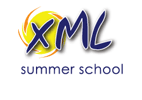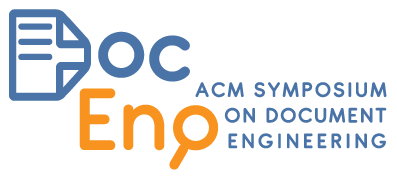Schedule for Thursday
| Time | Room RB209 | Room RB210 | Room RB211 |
| 9:00–10:00 | Registration | ||
| 10:00–11:30 | oXygen Users Meetup | eXist-db Users Meetup | Schematron Users Meetup |
| 11:30–12:00 | Coffee break | ||
| 12:00–13:30 | oXygen Users Meetup | eXist-db Users Meetup | XSL-FO, CSS and Paged Output hosted by Antenna House |
| 13:30–15:00 | Lunch break | ||
| 15:00–16:30 | oXygen Users Meetup | Creating documents with the speedata Publisher | XProc showroom: Cool things done with XProc |
| 16:30–17:00 | Coffee break | ||
| 17:00–18:30 | oXygen Users Meetup | TXSTEP – introduction to and hands on | XProc showroom: Cool things done with XProc |
How unconference day will be organized
In both morning and afternoon there will be two 1.5 hour long slots separated by coffee break. Sessions will be running in three parallel rooms. Lunch will be provided for attendees with a full-pass.
Program of respective sessions is completely in hands of session organizer. So any queries about particular session should be directed to the session organizer.
Location
The first conference day takes place in the same venue as the main conference. However it is situated in the different building. It is best to use campus entry from the Italská street. You can see entrance and explore area using Google Streetview.
Just use entrance from Italská street and continue straight inside building until you reach atrium. Then use stairs to go one floor up and then look around for room RB209, RB210 or RB211 (alternatively you can use elevators on the left side and go to the floor marked as 2 on the control panel).
Session details
oXygen Users Meetup
organized by George Bina
The oXygen users meetup is a great opportunity to meet oXygen developers as well as other oXygen users. The various sessions we host cover both how oXygen supports you for XML development and XML authoring, presented by our developers and we always try to invite also some of our users to share their experience.
» See more detailed schedule
eXist-db
organized by Leif-Jöran Olsson
» See more detailed schedule
Schematron Users Meetup
organized by Tony Graham and Andrew Sales
Schematron is widely used, and every XML conference probably has at least one conference
presentation that mentions Schematron. However, despite its popularity and ubiquity,
Schematron users seldom get a broad overview of the state of Schematron or get to hear
about more than one or two case studies of Schematron in action. Conversely, people who
don’t know Schematron seldom get the introduction to Schematron that they need in order
to understand why other people are using it and why it features in conference
presentations.
This session provides the missing pieces:
- Short overview of Schematron, its origins, how it works, and why it is useful
- Overview of implementations
Schematron is usually associated with XSLT, but it has been implemented in XQuery and
is used with XML databases. This segment provides an overview of available
implementations. - Update on ISO Schematron
ISO Schematron (2nd Edition) was standardized in early 2016 and became free (as in
beer) later in 2016. It is likely that few people are aware of the update and that fewer
still are aware of the changes between editions. Presented by Andrew Sales, current ISO Project Editor for Schematron. - Schematron Quick Fixes
Overview of this useful adjunct to Schematron that is being standardized by a W3C
Community Group. - Testing Schematron
How can you know that your Schematron is complete and correct? This portion looks at
how to test Schematron, including STF by Tony Graham and the ideas behind sutf by
Jirka Kosek. - Multilingual Schematron
ISO Schematron defines a mechanism for multilingual schemas using sch:diagnostic.
The standard XSLT implementation presents every translation of a message, but recent
oXygen versions present only one translation based on the user’s language preference.
Separately, the open source OmegaT translation tool can translate Schematron files,
making it possible to have per-language versions of your Schematron that are translated
as part of your general translation workflow. - Lightning talks/demonstrations
Short presentations by Schematron users about how they use Schematron and SQF. - Q&A discussion
General round-the-room discussion about aspects of Schematron and its use that were
or weren’t covered by the previous segments.
XSL-FO, CSS and Paged Output hosted by Antenna House
organized by Michael Miller and Tony Graham
Part 1 – A brief review with attendees of the highlights from Antenna House product releases and developments during the past 12 months. These include:
- PDF/UA output for improved accessibility
- Improved graphic support
- All-new interface for submitting jobs over the web
- Improved DITA support from updated PDF5-ML DITA-OT plugin
An opportunity for users to list features that they would like to see in future releases of the XSL-FO and CSS formatter.
Part 2 – Interactive focus on XSL-FO, CSS and the page – attendees will be asked in advance to come with examples and for ideas on additional topics they would like to discuss.
Creating documents with the speedata Publisher
organized by Patrick Gundlach
In this sessions you will see how to use the speedata Publisher. Patrick will show examples, explain how to go create simple and more advanced documents, answer questions etc. The speedata Publisher is an open source database Publishing software that creates PDF from XML data. It is helpful to have an speedata Publisher and XML editor installed.
XProc showroom: Cool things done with XProc
organized by Gerrit Imsieke and Achim Berndzen
XProc is said to have a problematic learning curve even for people familiar with XSLT or XQuery. The XProc showroom will prove this effort is worth it by presenting solutions developed using this technology.
As a kickoff we will give a short introduction discussing the classical “publishing pipeline”, often used to motivate the use of XProc.
After that developers will present their projects in short talks (about 15 minutes). They will tell you how XProc is used in their projects and give you insights why it is the right tool for their tasks. The projects will cover a wide range of XML use cases, such as single source publishing, EPUB production, digital humanities, or creation of static web sites.
At we end we will have an “ask your expert” round where you can talk with the presenters and can get hints how to use XProc in your projects.
TXSTEP – introduction to and hands on a powerful XML-based scripting language for computing in the text-based humanities
organized by Tobias Ott and Wilhelm Ott
Introduction to and first exercises in using TXSTEP, a very powerful open-source XML-based scripting language for analysing and processing textual data. Technically, TXSTEP is an XML based user interface to the proven TUSTEP toolbox which offers basic modules of text data processing and analysis. Comparing different versions of the same text, listing the variant readings and recording them on files for further processing; extracting information from a text and preparing sort keys for the extracted index entries or bibliographic records; transforming a text by making explicit (e.g. by adding XML tags) its internal structure or by analysing it and extracting information contained explicitely or implicitely (e.g., the average number of syllables per word in a latin hexameter poem) in a text: these are key functions of three out of ten “modules” offered by TXSTEP.












